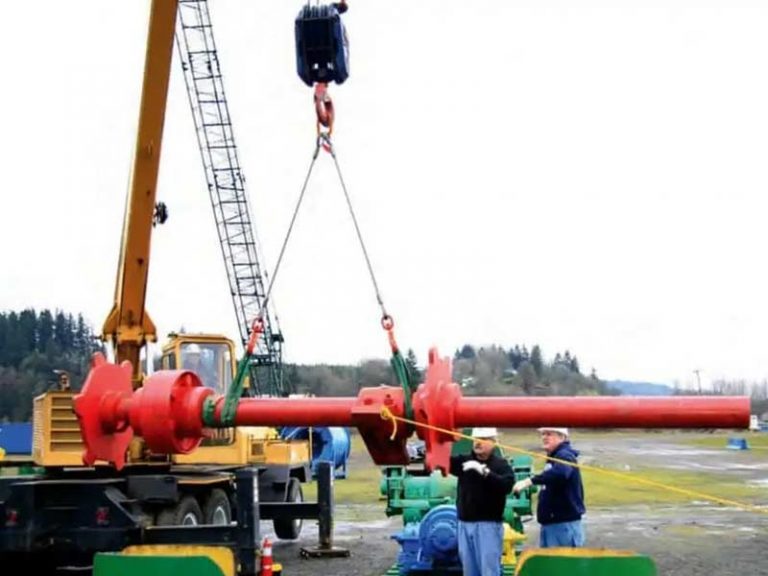Types of slings to consider for upcoming projects
In addition to hiring a certified and experienced crane company, you should keep in mind that they use different types of slings for different lifting operations. Slings are the means of connecting your load to the hoisting equipment, you should take special caution with the rigging used with your load by the hoisting companies, remember that your load should be in the hands of professionals.
STEEL CABLE STRINGS
Known for their high resistance and flexibility, in TRANSPORTES MONTEJO we only use steel core slings because they allow us the best maneuverability and high resistance to impacts. Its manufacture is developed from the machining of steel wires in spiral form that allow harmonic dynamic movements that softens the impact.
When using the rope, be careful not to bend it, as it is subject to fatigue. To make your rope more resistant to fatigue, purchase a high quality rope with a high number of wires.
It is common for even the strongest rope to wear due to natural causes. To reduce the chances of accidents occurring, always inspect the rope before use. During inspection, look for broken wires, scratches, localized abrasions, corrosion, kinks, deformed end fittings and other forms of damage.
CHAIN SLINGS
They are made of alloy steel, which allows them to handle impacts and sudden loads, also, withstand high temperatures. Just like other slings, always inspect for damage before use. Remember, “The chain is only as strong as its weakest link” – the failure of one link can cause a serious accident, so don’t leave anything to chance.
When looking for defects, pay attention to the overall length of the sling chain and determine if it matches the length on the identification tag. Do not use the chain sling if it is longer or shorter than the identification tag indicates.
While doing so, also inspect: the connecting link, master link and chain links for signs of wear, elongation and deformation, welds, discoloration, and especially connective elements such as bolts over links.
SYNTHETIC SLINGS
They are flexible, lightweight and can be molded around shapes, which makes them easy to use. Synthetic web slings are made of nylon or polyester. Nylon slings are the most common. Polyester slings have a 3% stretch that makes them easy to provide a cushion against shock.
Although slings are flexible, you should avoid exposing them to high temperatures (above 82 degrees Celsius) as this will damage them. You should also avoid using them in areas exposed to radiation. Do not expose them to hot loads or work with abrasive materials, use metal slings for these.
To avoid the possibility of accidents during lifting operations, inspect them before use. When inspecting, look for signs of web discoloration that may result from charring, melting and caustic wear. Never use a synthetic sling against a corner, you should use edge or corner protectors.
Do not use any sling that shows signs of damage or deterioration.
They have holes, tears, fraying and cuts. These forms of damage are sometimes dangerous. Check the RED threads on the lanyard and determine NOT to continue using it.
If the internal threads are too damaged, do not use the sling.
Frayed surface is a sign of excessive wear caused by load sliding on the sling.
Also, do not use a sling with knots to shorten it, as knots have been shown to reduce the capacity of the sling to approximately 50% of its capacity.
BEFORE USING SLINGS
There are many things you should know before using slings. These things include:
- The weight of the load
- The center of gravity of the load
- The condition of the sling – is it in good working order
- The working load limit of the sling.
- The characteristics of the different slings.
- The rated working load of the sling’s attachments and components.
- The rated working load of the sling.
- Environmental conditions such as the presence of corrosive agents, high temperatures and humidity.
- Physical characteristics of the load, such as surface temperature, geometry, and sharp edges.
When using slings, be sure to use the equipment, procedures, tension calculations and sling stress calculations. Even if you have inspected the slings, before starting the operation. Inspect load securing points, such as lugs and bridles, before lifting any load.
At Transportes Montejo we are expert lifting technicians and training goes hand in hand with inspection as a fundamental part of our quality system. If you need a complete and reliable lifting service do not hesitate to contact us. WE ARE WAITING FOR YOUR CALL.
Our experience at your service.

